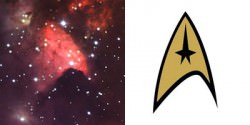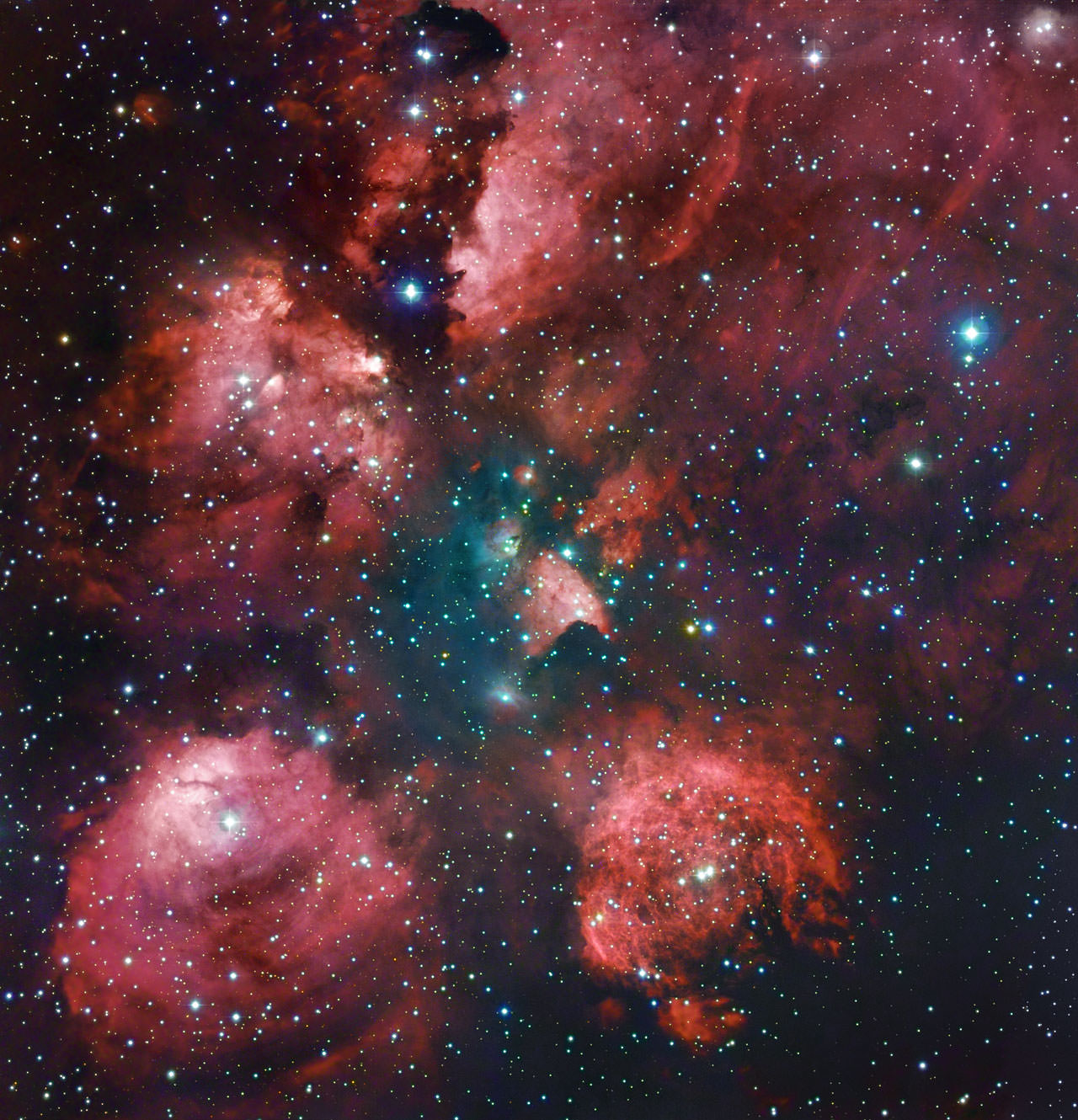Glowing red against a backdrop of stars, amateur astronomers have remastered one of the sky’s most distinctive nebulae, the Cat’s Paw Nebula.
In a stunning combination of data from amateur and professional telescopes, Robert Gendler and Ryan M. Hannahoe mixed their 60 hours of exposures of the nebula on a 0.4-meter telescope with existing images from the 2.2-meter MPG/ESO telescope at the La Silla Observatory in Chile. (See the original image.)
The result is nothing short of beautiful (zoom into all its nebular grandeur at StarryCritters.com). The Cat’s Paw Nebula, also known as NGC 6334, Gum 64 and the Bear Claw Nebula, is found about 5,500 light-years from Earth toward the constellation Scorpius, the Scorpion. The nebula is one of the most active star-forming regions in the Milky Way Galaxy, spanning about 50 light-years, and contains thousands of new stars although most are hidden in the dense clouds of gas and dust. Blistering ultraviolet radiation from these stars excites hydrogen atoms within the star cloud causing it to glow with a characteristic red hue. English astronomer John Herschel first described the nebula in 1837 while observing from the Cape of Good Hope in South Africa.
Anyone using Adobe Photoshop might be familiar with the process used. By combining the luminance, or brightness, of the ESO image with color information from the pair’s long exposures, Gendler and Hannahoe were able to bring out more vibrant color, such as the faint blue nebulosity near the center of the nebula and surrounding some of the brighter stars. The image from the ESO telescope adds finer details.
 Does anyone else see the similarity between the arched shape in the middle of the nebula with the Federation insignia from the popular television series Star Trek?
Does anyone else see the similarity between the arched shape in the middle of the nebula with the Federation insignia from the popular television series Star Trek?
Image Credit: ESO/R. Gendler & R.M. Hannahoe


